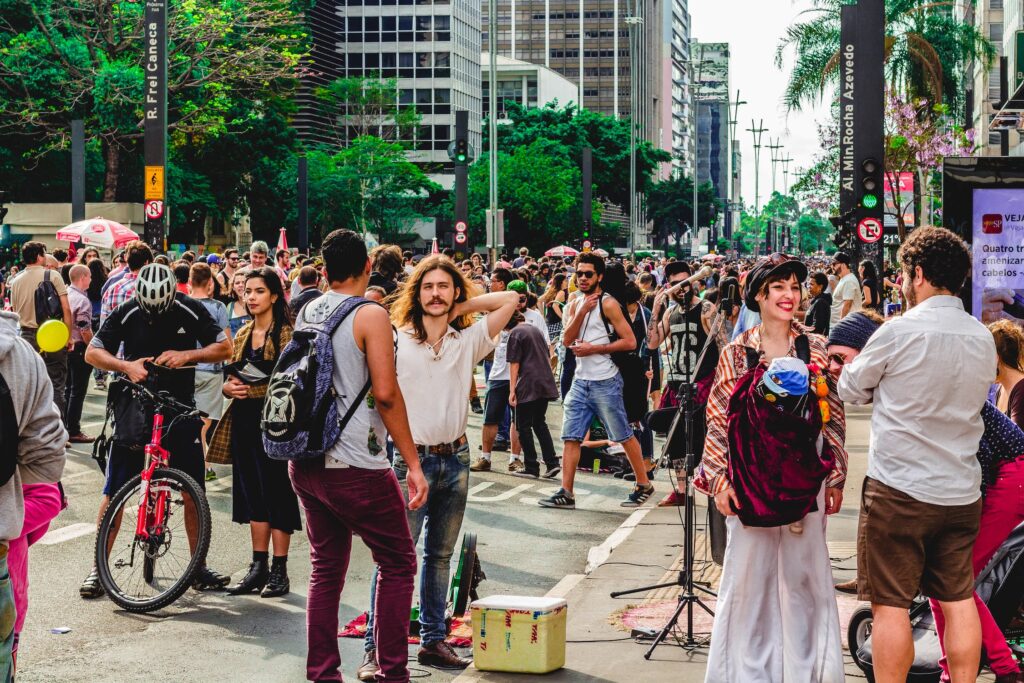Finding a sustainable balance between visitor tourism growth and protecting the environment and the local community is one of the biggest challenges in the hospitality industry.
It comes down to one key aspect: Effectively managing visitor numbers.
We’ve already discussed why it can be challenging to implement and choose sustainable travel practices, and how destinations can transition to a sustainable model.
In this guide, we’ll zoom in even more on how to balance visitor numbers. We’ll look at how to get started, different best practices, strategies, and mistakes to avoid.
Content Overview
⦁ Balancing visitor numbers: Where to start
⦁ Seasonal and time-based strategies
⦁ Diversify your experiences and offers
⦁ Educate and inspire visitors and locals
⦁ Tracking and managing visitor numbers
⦁ Common mistakes to avoid to balance visitors numbers
Balancing visitor numbers: Where to start
Balancing visitor numbers starts with plan and identifying the optimal number of visitors your destination or brand can comfortably accommodate.
What’s the maximum number of visitors your area or business can support without having a negative effect on the environment or overwhelming local communities?
Review past visitation data, the current state of your destination, chat with local businesses and the community, and consult experts if necessary to define this number.
Bhutan is known for it’s high-value, low-impact tourism model. The government selects specific destinations for tourism development while preserving others, ensuring the environment and local culture are protected.
Seasonal and time-based strategies
Once you know what your target numbers are, implement strategies to distribute visitor numbers throughout the year.
- Promote off-peak travel periods and underrated places.
- Explore dynamic pricing, dynamic capacity planning, and limit the number of visits to certain areas/places during specific hours to encourage visits during less crowded seasons or timings of the day. You can also implement restrictions on group sizes.
- Look into specific sustainability visitor fees for popular areas or attractions, which can help regulate when and how long someone decides to stay.
- Encourage people to make reservations in advance to manage the visitor flow and prevent overcrowding. One-way trails and time-bound entry tickets can also be effective!
- If it makes sense for your destination and community, consider experimenting with different operating hours for popular places or attractions to spread out visitors.
Diversify your experiences and team up
 Photo credit: Jeremy Bishop on Pexels.
Photo credit: Jeremy Bishop on Pexels.
Another effective way to inspire and better balance visitors is to diversify. Show them that you’ve got more to offer than the typical experiences!
Highlight less-visited sites and underrated experiences. You already have what you need to do this. Promote sustainable transportation with easy accessible information and options like bike rentals, or ride-sharing services.
Team up with neighboring destinations and attractions to create collaborative plans and experiences. This can cover anything from marketing to shared itineraries, or transportation partnerships.
Partnerships will not only help balance visitor numbers, but also give visitors a more well-rounded experience. What not to like?
Educate and inspire visitors and locals
Visitor management isn’t just about numbers. It’s also about building awareness and understanding. To effectively balance visitor numbers, it’s essential to educate and inspire both your visitors and locals. Here’s how:
Transparency: Share your visitor management plan openly with your audience. Explain the measures you’ve put in place and why they’re necessary for the sustainability of the destination. This is not only good for your destination, your community and the visitor experience. It also shows that you care, which in itself can attract people with similar values.
Engagement: Engage with visitors and locals through various channels, such as websites, social media, or on-site information points. Give them insights and inspiration on the importance of sustainable tourism and how they can contribute.
Educational initiatives: Consider organizing workshops, guided tours, or informational events to raise awareness about sustainable tourism practices and the role each visitor plays.
Tracking and managing visitor numbers
Balancing visitor numbers is a continuous work in progress. Experiment, follow up, and adapt!
Schedule periodic assessments of your visitor management initiatives to measure their effectiveness. Encourage visitors and locals to provide feedback on their experience and use their insights to make improvements.
Be prepared to adjust your plan as necessary based on the data you collect and the feedback you receive.
Common mistakes to avoid to balance visitors numbers
Here are some pitfalls to avoid.
- Starting too late: Proactive planning is more effective in managing visitor numbers and minimizing problems. So even if your destination or business doesn’t struggle today, create a plan to make sure your growth is sustainable before it’s too late.
- Neglecting local insights: Not involving the local community and businesses in decision making can lead to problems and will make it harder to get a realistic overview of what needs to be improved and what’s working.
- Focusing only on hotspots: Overemphasizing well-known places and attractions usually lead to overcrowding. If a place already is well-known, it’s often better to highlight other places instead.
- Not using data for informed decisions: If you don’t measure, you won’t know if you’re improving. And if you don’t transform your data into actual insights, it doesn’t help much.
- Overlooking environmental impact: Concentrating solely on visitor numbers and ignoring other effects like social and environmental impact can backfire. Make sure to see the bigger picture and consequences of your decisions.
- Unclear communication: Failing to communicate your visitor management plan clearly can confuse visitors. Be transparent about rules, restrictions, and sustainability goals to set the right expectations.
- Overcomplicating things: Sometimes, simplicity works best. Overcomplicated visitor management can lead to confusion and resistance from both visitors and locals.
Balancing visitor numbers is one of the most important strategies for sustainability
Balancing visitor numbers involves strategic planning, local involvement, diversified experiences, proactive education, and data-driven adjustments.
To avoid common mistakes, start early, collaborate, keep it simple, and be transparent. There is no one way to do it. The “best way” can vary depending on location, situation, season, and more.
Balancing visitor numbers is key for sustainable travel and place development. It not only guarantees a better experience for visitors and locals, but also protects our destinations, supports long-term sustainability, and inspire others to follow.
Need help with any of this? Learn more about how we can help you drive these changes here.



 Photo credit:
Photo credit:  Photo credit:
Photo credit:  Photo credit:
Photo credit:  Photo credit:
Photo credit:  Photo credit:
Photo credit: 



0 Comments